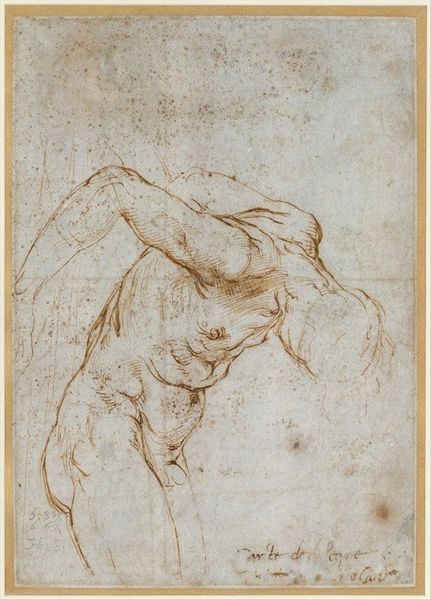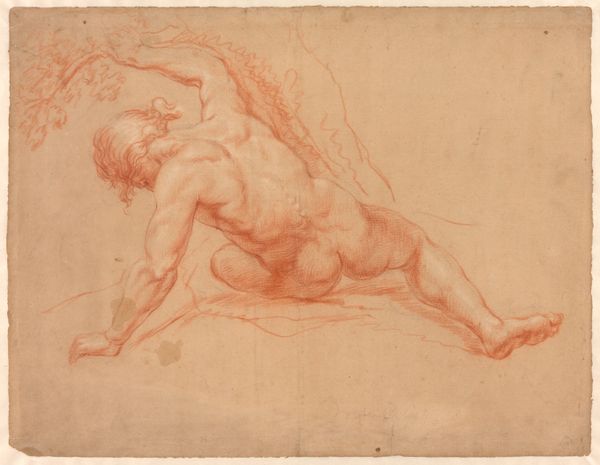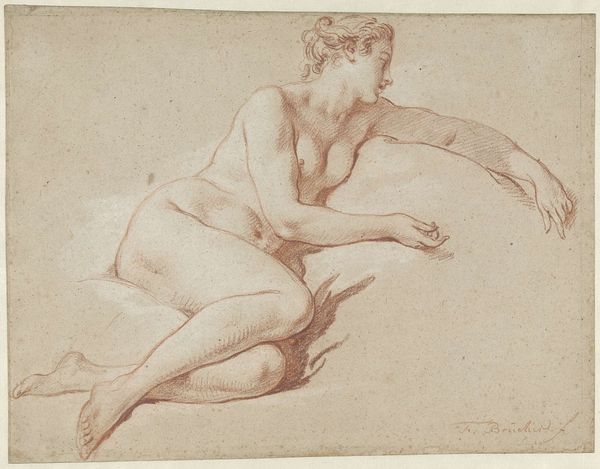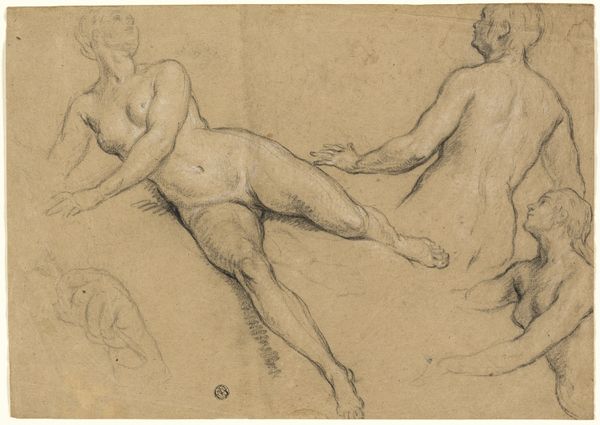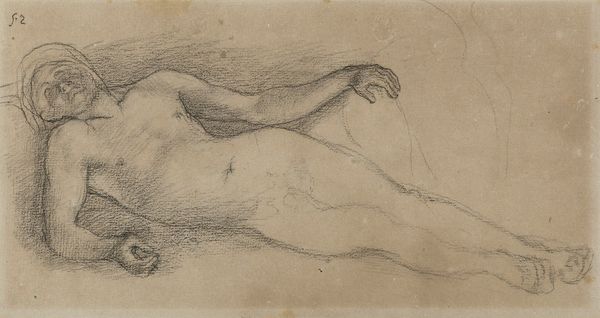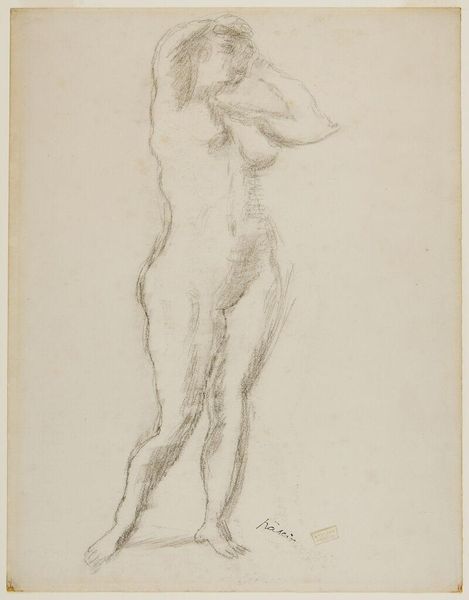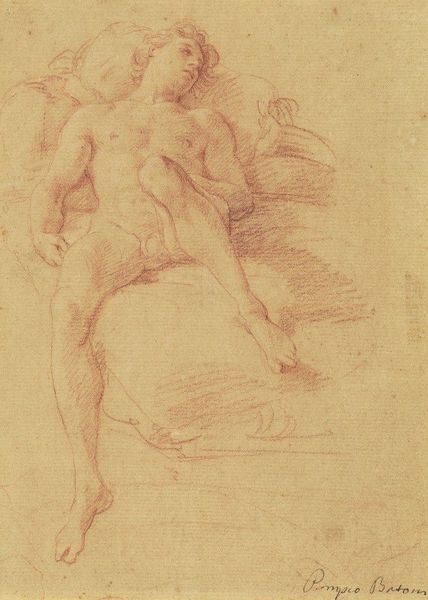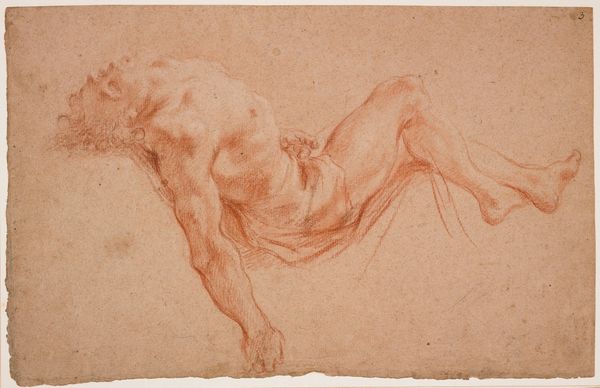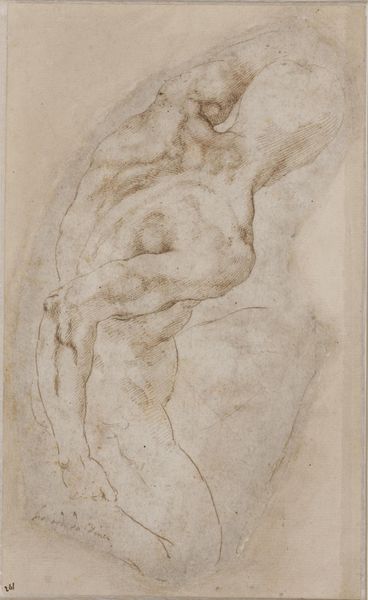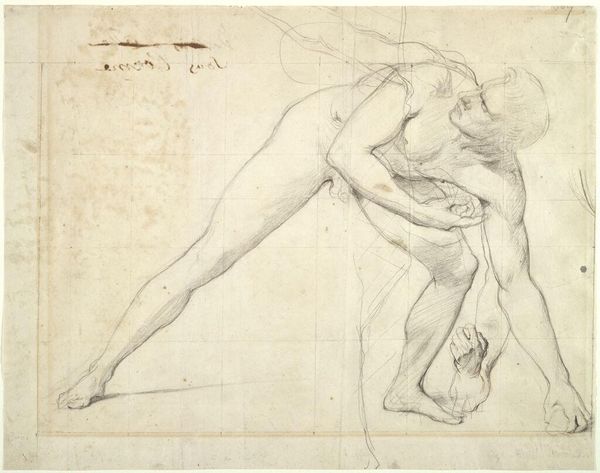
drawing, pencil, charcoal
#
drawing
#
baroque
#
charcoal drawing
#
figuration
#
pencil drawing
#
pencil
#
charcoal
#
history-painting
#
academic-art
#
nude
#
realism
Copyright: Public Domain: Artvee
Editor: This drawing, "Hermaphrodite" from circa 17th century, attributed to Peter Paul Rubens, immediately strikes me with its delicate use of line. It almost feels like a dream. How do you interpret this work, considering its historical context? Curator: The figure of the Hermaphrodite has a rich and often fraught history in Western art and thought. The idea of combining male and female attributes challenged societal norms and, indeed, the foundations of identity. But notice how Rubens uses line to emphasize the smoothness and idealism typical of academic art. Do you see how it both reinforces and maybe even gently questions conventional ideas of beauty? Editor: It's interesting you mention academic art. It’s like the drawing almost idealizes the figure, but the very subject, a hermaphrodite, disrupts that sense of perfection. Was this kind of representation common in that period, or would it be considered transgressive? Curator: Seventeenth-century Europe, and especially artistic circles, were grappling with both the legacy of classical ideals and the burgeoning scientific inquiries into the body. Images of hermaphrodites often circulated within scholarly and artistic communities, reflecting that negotiation between classical aesthetic ideals and scientific interests. Was it transgressive for a wider public? Likely, yes, if it escaped elite circles. But here, within the context of a drawing, perhaps it functions more as an exercise in form and the display of knowledge, demonstrating both classical and contemporary knowledge. Editor: So, Rubens is perhaps participating in that discussion. It’s really about the act of representation, rather than making any strong social claims itself? Curator: Precisely! And the "how" is critical here; through whose eyes are we viewing? The role of the artist and their place in society is inextricably tied to that public perception. Editor: That gives me a whole new perspective on how art operates in relation to society! Thanks. Curator: A fruitful exchange, reflecting how even seemingly simple depictions engage within complex social dialogues.
Comments
No comments
Be the first to comment and join the conversation on the ultimate creative platform.
